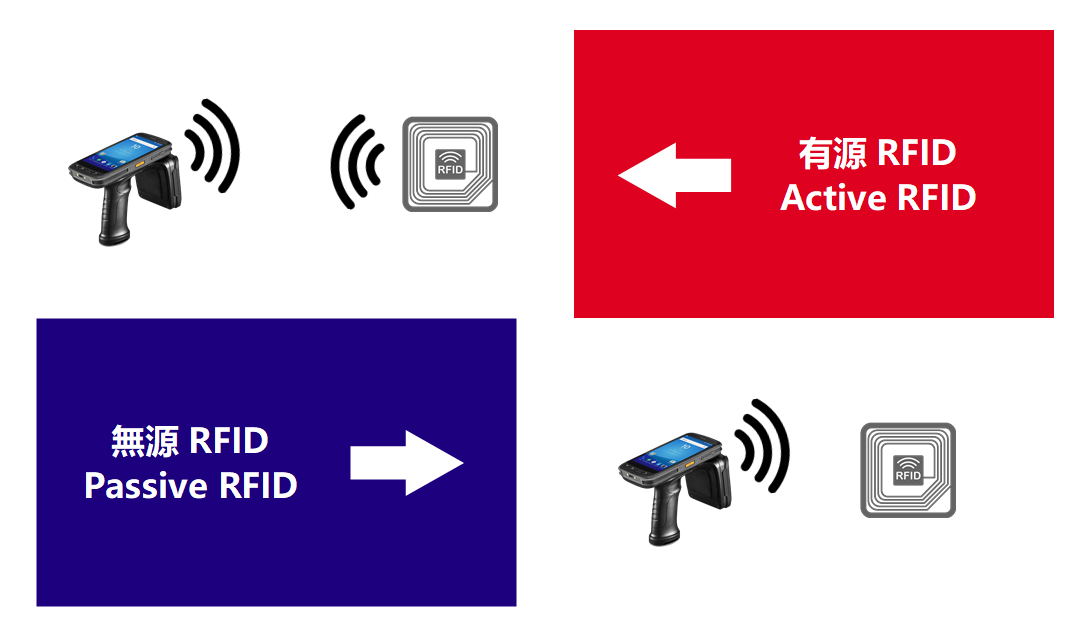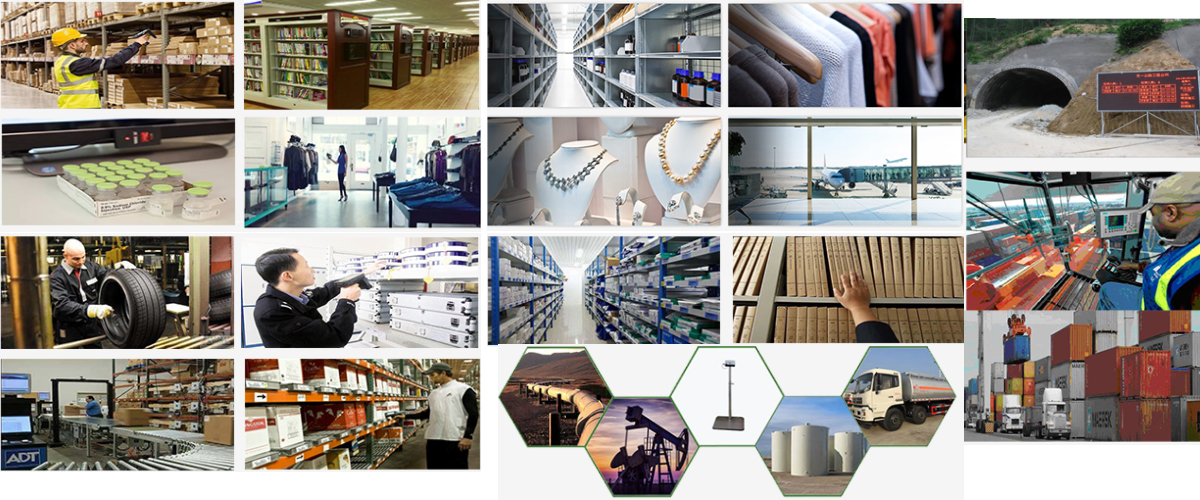Active RFID tags
Active RFID tags are powered by a built-in battery. Different labels use different numbers and shapes of batteries.
Advantages: long working distance, the distance between active RFID tag and RFID reader can reach tens of meters, even hundreds of meters.
Disadvantages: large size and high cost, use time is limited by battery life.
Passive RFID tags
Passive RFID tags do not contain batteries, and their power source comes from the RFID reader. When the passive RFID tag approaches the RFID reader, the antenna of the passive RFID tag converts the received electromagnetic wave energy into electric energy, activates the chip in the RFID tag, and sends the information in the RFID chip.
Advantages: small size, light weight, low cost, long life, can be made into different shapes such as sheet or hanging buckle, suitable for different environments.
Disadvantages: Since there is no internal power supply, the distance between the passive RFID tag and the RFID reader is limited, usually within a few meters, and a higher-power RFID reader is generally required.
Working Principle

Compared
Use cases and scope
Is your goal to track inventory in a specific room? If so, passive RFID may be your ideal choice. However, if you need to physically monitor the physical location of tagged objects throughout the building, active RFID will be your best choice. This boils down to scalability and functionality. Passive readers can only read tags about 1 to 5 meters away-so expanding a system that can be used to actually track the location of items will require a large number of readers.
On the other hand, active RFID systems are easy to expand because the reader can detect tags beyond 100 feet. This means that in some cases, you can cover 10,000 square feet with just one reader and a few reference points. For example, calculate their position relative to a reference point and send these data to nearby readers. The reader then sends the location data to the gateway, which then sends it to the application. The application obtains data and provides users with an estimated location of each tagged asset.
Label cost
If the cost of the tag is the main driver of your decision, then passive RFID will win every time.
Battery Life
Passive RFID tags are simple and do not require batteries-which means they can be used almost permanently, which is an important part of their appeal. On the other hand, the service life of active RFID tags is usually between three to five years, and some can last as long as 10 years. Although passive is the clear winner in terms of tag life, it is worth noting that active RFID tags have a longer battery life than some other RTLS technologies (such as ultra-wideband and WiFi).
Environmental restrictions
Passive tags are easier to completely seal and are more suitable for harsher environments. Since active tags require batteries, it is more difficult to reinforce them. Keep in mind that active tags also cannot always withstand the autoclaving process-so if your tracking use case requires sterilization, you need to consider all options.
Warehousing application comparison
Passive RFID is composed of antenna and internal chip. When the tag enters the magnetic field, it is driven by the electromagnetic wave received by the integrated circuit. These electromagnetic waves are emitted by RFID readers. When the tag receives a signal of sufficient strength, the RFID electronic tag is activated and can send data to the reader. Passive RFID uses the communication between the reader and RFID electronic tags to identify and record information. The antenna can be installed anywhere to identify the information recorded on the tag. The typical installation method of RFID is installed at the door of the warehouse, or at the key node, which we usually call the "throat".
Passive RFID can track or monitor the pallets, boxes and goods entering and leaving the warehouse. When entering the warehouse, the goods may already have RFID tags, or it may be necessary to initialize the tags, enter the goods information, and then affix them to the goods. In the warehousing business, fixed RFID readers, palm-sized RFID handheld data terminals, and forklift mobile readers can be used. When carrying out key services such as warehousing, unloading, inventory, and picking, it automatically records the goods associated with RFID tags, and can instantly transmit the collected information to the data center management platform.
Active RFID tag is an electronic tag classified according to the power supply mode of the electronic tag, and it usually supports long-distance identification. Active RFID electronic tags periodically transmit signals according to preset rules. When the RFID tag enters the active area of the reader, the reader obtains the information sent by the tag to complete the tag identification process.
Active RFID readers are placed in areas in the warehouse where goods need to be monitored and tracked. Deploy active RF readers according to the site environment and RF planning to ensure coverage and signal strength, as well as wireless access to wireless LANs. The entry point plan is the same. There are different types of active tags. Some active tags can set different signal transmission periods. They can be set at specified time and rules. If the tag is moved or leaves the warehouse, it will automatically alarm. For inventory counting, tags can automatically wake up and report their normal existence.
